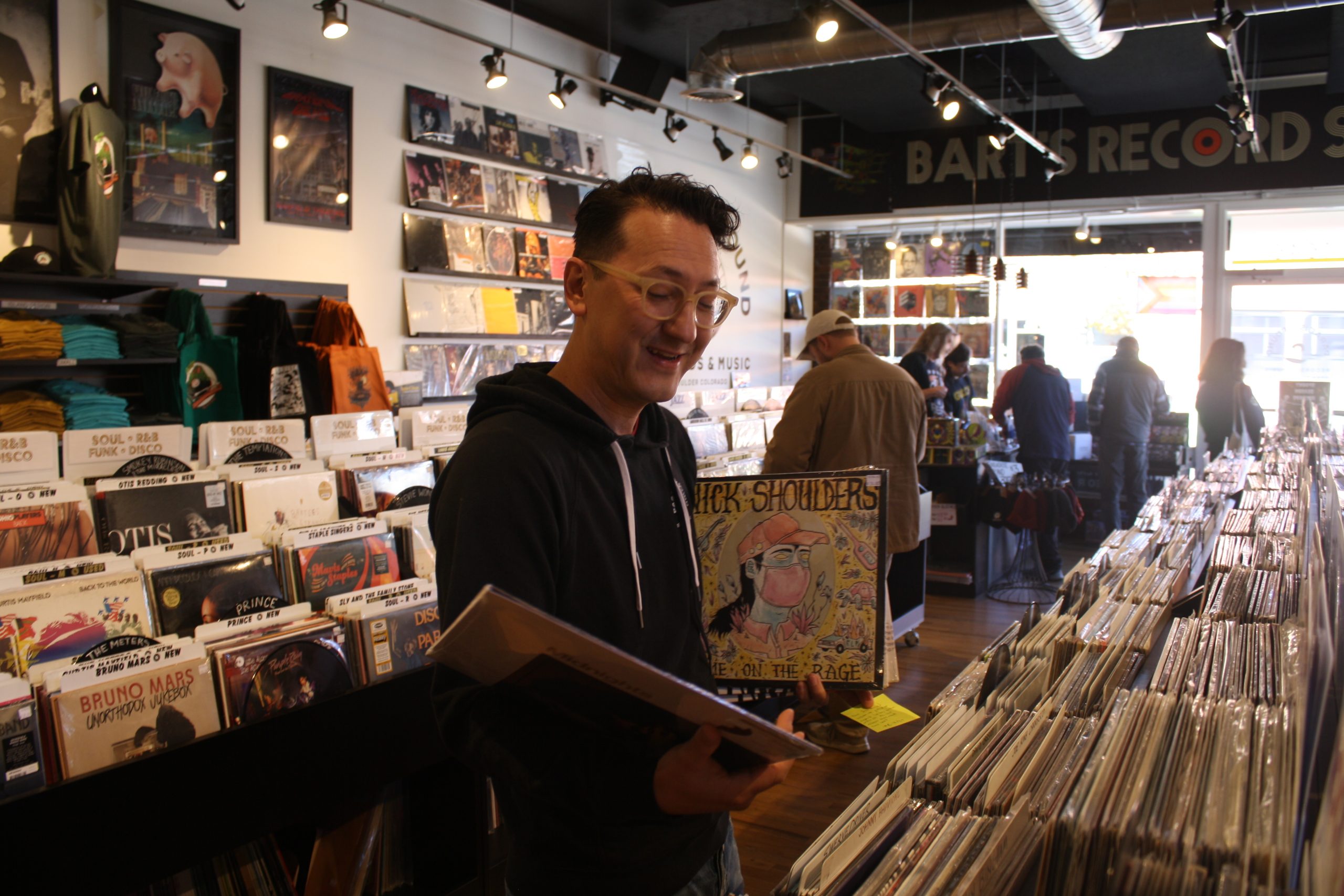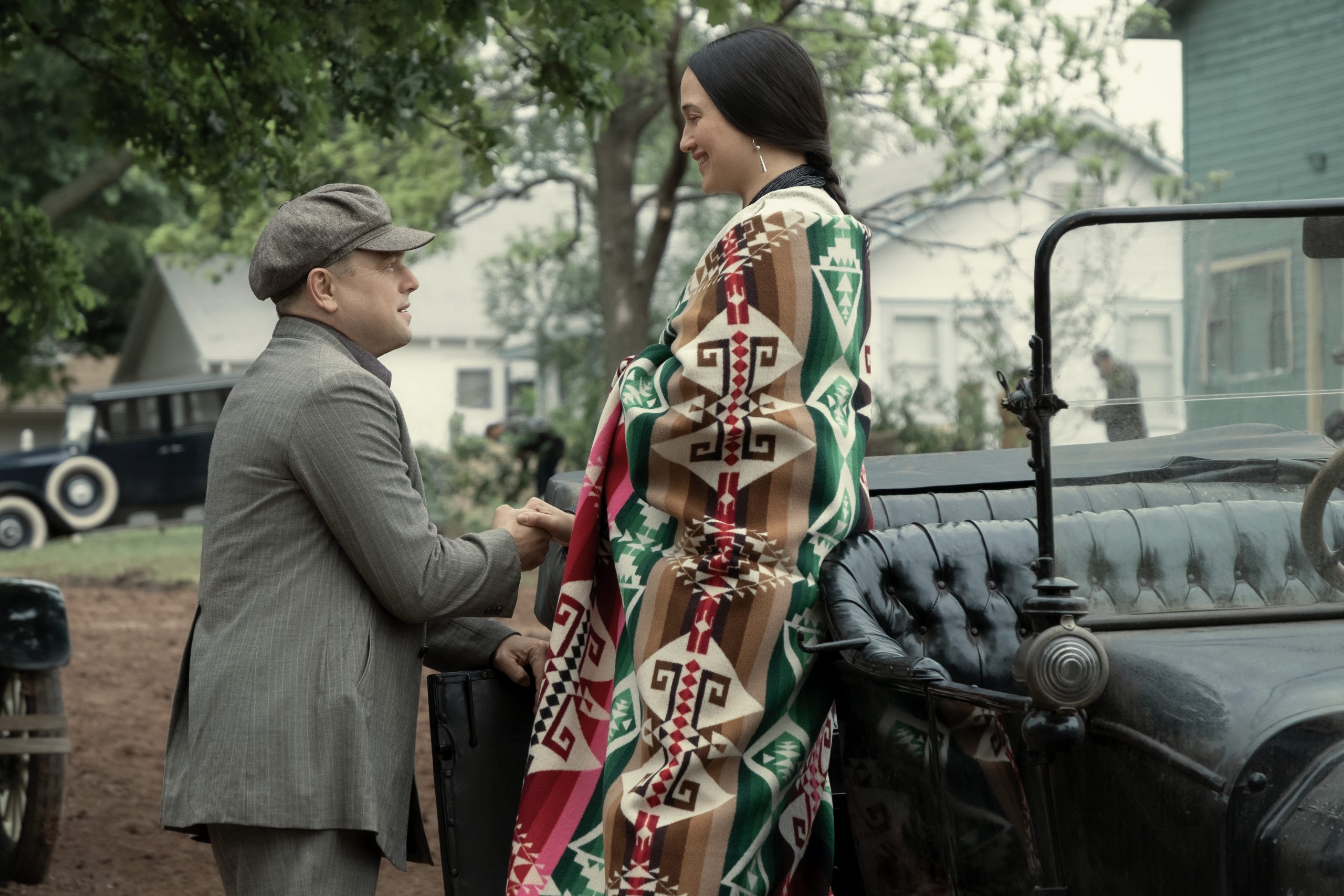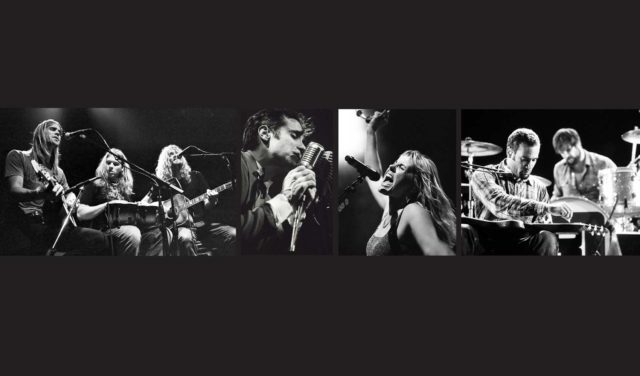
It was 1994, and Don Strasburg was walking (running, depending on who tells the story) around his Boulder home with a 101 Dalmatians bed sheet on his head. The P-Funk Mothership had landed in Boulder, and the linens belonged to none other than Dr. Funkenstein himself, George Clinton.
Clinton had taken to wearing the bed sheet as a costume of sorts during a three-night run of P-Funk All Stars shows in Boulder. Like the music, the sheets were getting funky.
Reminded of the story, it takes Strasburg a moment to regain composure.
“I remember that so well,” he says. “That was his outfit he wore onstage and someone said, ‘Can you take these home and wash them?’, and I remember thinking ‘Oh my god, I’ve got George Clinton’s 101 Dalmatian sheets.’”
The bed-sheet-wearing 25-year-old grew up to be a giant in the Colorado music scene: the co-president and senior talent buyer for AEG Live Rocky Mountains and AEG Live Northwest, and a co-owner of Boulder’s talent-buying authority Z2 Entertainment.
But that night in 1994 Strasburg was still a budding entrepreneur, reveling in the growing success of what he and his business partners had created, the landing site for the Holy Mothership and a host of otherworldly music still yet to come, the Fox Theatre.

The Fox was 2 years old at the time, a new addition to Boulder’s clutch of live music venues: Tulagi’s and Taylor’s on the Hill, J.J. McCabe’s on Walnut Street where the Chop House sits now, and the Dark Horse were the live-music settings de jour. The Boulder Theater was out of commission at the time as a result of former owner Richard MacLeod’s costly and ultimately untenable foray into television.
But the Fox was creating something new, a place where folks could see live music nearly every night of the week — and they could see it cheap. (Think: $7.35 for Radiohead during the Pablo Honey years.) With a complete remodel before they opened on March 6, 1992, and the installation of a world-class sound system rivaled by few other clubs in the country, the Fox became an incubator for artists, sound and lighting engineers, photographers, talent buyers and damn near anyone that graced the building at 1135 13th St. with their presence.
That was clear in 1994, when the little nightclub that could was only a toddler.
This year the Fox turns 25 and, much like Strasburg at 25, it’s still running around wearing a 101 Dalmatians bed sheet, so to speak. It’s still a place for music lovers to revel, to find new music or stand so close to a cultural icon they can smell the sweat. It’s a place where local acts can grow and touring acts can gain traction. It’s where folks who want to make the music biz their biz go to learn how to be the best at their craft.
And it’s still one funky party.

A very, very brief history of the Fox
The history of the Fox is well documented; its home, the building at 1135 13th St., was constructed in 1926, originally as the Rialto Theatre, which may or may not have been a vaudevillian stage. It changed hands — and street numbers, and businesses — a number of times. Few businesses lasted more than five years, save the 500-seat movie theater that was installed in 1961. That one stuck for 30 years.
And then came The Pyramid Group.
The idea for the Fox as a nightclub was born two years before the club itself came to life, back in December of 1990.
Still a student at Colorado College, a young Don Strasburg was promoting a concert for The Samples at Colorado Spring’s Fine Arts Center. It was there he met two folks that set that idea in motion: the band’s manager, Ted Guggenheim, and Samples acoustic guitar player Charles Hambleton.
The two convinced Strasburg that he was up to the task of starting a club in Boulder.
And that was the moment the idea of the Fox Theatre was born.
But there’s always a lot to do when you have a baby — or a nightclub — like amassing the capital necessary to purchase or lease a space. Then there was the very real likelihood that the space would need to be gutted and remodeled. Then there was the matter of equipping the venue with a sound system.

Strasburg was 20 years old at the time. He was going to need some help.
So, naturally, he partnered up with a couple of other 20-somethings, his buddies Dave MacKenzie, James Hambleton (Charles’ brother) and Jon O’Leary.
They eventually rounded out the crew with an old hand of the business, Dicke Sidman, a former production manager at the Boulder Theater.
At first, the team — who’d dubbed themselves The Pyramid Group — had their eyes on the Peak Theater at the 1109 Walnut Building (today the home of Boulder House), but they lost the bid. It was all for the best, really, after Strasburg stopped at the Fox Movie Theater on the Hill one day and asked if they’d be interested in selling the space.
The rest is history.
‘Where the sound is the difference’

“We hoped that the Fox would be the place that really accepted and welcomed the music community,” Strasburg says. “We felt that the other venues operating in the area at the time had a much different perspective toward the customer and how they were being treated. We felt we had to treat people like we wanted to be treated. … At 22 years old, your perception of how you’re treated at a club is different than a 40 year old.”
So The Pyramid Group began recruiting the best and the brightest to help them create a venue that would, more than a decade later, earn a nod from Rolling Stone as the fourth best rock club in America.
One of those folks was audio wunderkind Bret Dowlen.
Dowlen is the kid who made speaker cabinets in woodshop while you made a crappy shelf that your mother pretended to love and your father hung in the spare room so you wouldn’t feel bad.
As an adult he became the man behind the sound at many of your favorite Front Range music haunts.
He built sound systems at the Fillmore, Ogden, Paramount and Bluebird in Denver, and the system at the Black Sheep in Colorado Springs. He built state-of-the-art speaker cabinets at Red Rocks, and has managed the sound for countless (probably hundreds) of shows there over the years.
It was the speakers at Red Rocks that gave birth to the game-changing system at the Fox.
“No one had done anything quite like what the Fox was gonna turn out to be, so it was important to set the bar pretty high,” Dowlen says. “At the time there were very few speaker cabinets available commercially — EAW (Eastern Acoustic Works) out of box … there were a few others out there from England, but they were expensive and didn’t sound that good, especially at this altitude. It takes some different tuning at low frequency chambers and subchambers to make it work up here. So I had the advantage of tuning [the Red Rocks system] at this altitude.”
He got the notion that the same system might be good for the new club in Boulder.
The Fox was still being remodeled when Dowlen joined the effort, and things were still a little rough around the edges.
“When I walked in, it sounded like a basketball arena: no seats, no curtains, they were chipping out parts of the floor at the time and it was a hideous sounding place,” Dowlen says. “So we had them spray down the roof and sidewalls with what was at the time new[ly developed] foam insulation, which deadened the room significantly.”

The remodel included reinforcing the stage to negate droning sounds and feedback. Instead of stacking the sound system on the stage, they installed I-beams to hang it from above.
Since the Fox is located in an area that already accommodated a fair amount of commercial and residential buildings, getting enough power to the venue to handle the load from the sound system was a concern. At best, too much load causes hums and buzzes in the sound, and at worst it can blow a transformer. So Dowlen did a speculative estimate and an isolation transformer was installed.
Once the acoustic treatments were in place, the actual system was installed in a day. Tuning took another day. And then they brought in a band — Wall of Windows — to do the first sound check.
“We shook it out one night with them to make sure we didn’t have any issues and I think the next night we were open for sale,” Dowlen says with a laugh.
Though he had some of the equipment in stock from his work at Red Rocks, Dowlen had to borrow “a bunch of money” to get the rest of the system built and installed. It was a big venture for what was then a small company.
“I think it paid off in the long run,” Dowlen says. “Fox kind of obtained a life of its own, in large part due to Dickie Sidman.”
In what Strasburg has called his “least favorite memory” of the Fox, Sidman passed away in 1995, just three years after the Fox set sail.
“He was the coolest guy. He was a musician as well,” Dowlen says of Sidman. “He knew how he wanted [the Fox] to run. He liked to make repairs. I could go hang out with him on the front porch and watch traffic go by. One day I looked at him and said, ‘This is your job? Just hanging out here and looking at these college girls?’”
College girls aside, the Fox became a nationally recognized name among those who knew a thing or two about music, thanks to the work of Dowlen, Sidman and Jon O’Leary.
It was also the envy of many a club around the nation.
“Anybody could buy a ticket and come in and take pictures and try to whip out a tape measure. I’m sure there was a lot of espionage at one point,” Dowlen quips. “There wasn’t a place like it.”
Dowlen made sure the Fox was always a step ahead of the game as sound technology moved forward. He was constantly upgrading the Fox’s sound system, estimating that he installed five systems worth of amplifiers and speaker components over a 20-year period.
While the Fox has a new system now, an MLA6 by McCauley Sound, Dowlen made modifications to that system to account for the altitude, and still tunes and tweaks it.
“I spend many hours checking it here in the shop,” he says. “It’s not such an easy process, but that’s what it takes.”
The people

When Dowlen talks about the laughs he shared with Dicke Sidman, when Strasburg cracks up about wearing George Clinton’s bedsheet, it’s a reminder that the real story of the Fox is found in the people — in those who created it, in the artists who’ve graced its stage, in the fans that made it a hangout, and in the people who have made it run night after night.
Their stories and experiences often overlap, each person setting up a story for the next. There’s rarely any demur, because who the hell objects to a good rock ‘n’ roll story?
It was actually Dave Watts, drummer for the improv-funk group The Motet, who first relayed the story of Strasburg wearing George Clinton’s bed sheet. Watts, who was playing with the pioneering jam band Shockra at the time, moved to Boulder from Boston in ’94.
“[Don Strasburg] owned a house and when I first moved to Boulder he’s like, ‘I’ve got a basement,’” Watts says. “He didn’t realize I’ve got a drum set.”
Since they’d met before, Strasburg did indeed know Watts had a drum kit. But maybe their roommate didn’t know.
“Oh God, yeah. Watts lived in my basement,” Strasburg says. “[The drums] didn’t bother me at all. Our other housemate Bobby, it drove him batshit crazy. … Oh God, those were good times.”
Watts backs up Strasburg’s suggestion that times were good.
“So I grew up in Boston, where everyone hates their job and their life, and we showed up in Colorado and pulled up at the Fox and these guys were like, ‘What’s up? High five!’ and grabbing our gear,” Watts says. “I couldn’t believe how psyched and positive people were.”
It’s easy enough to assume that the blissed-out vibe grew from the burgeoning music scene the Fox was creating — and likely a healthy consumption of pot, psychedelics and Coors. Boulder was becoming a hotbed for jam music, the bedrock upon which the Fox was built, due in part to Strasburg’s status as a Dead Head. Nascent bands that now enjoy cult-like followings — Phish, The String Cheese Incident, Widespread Panic, The Flaming Lips — were rolling into town like psychedelic circuses. Funk masters George Clinton, Bootsy Collins, Maceo Parker and The Meters were bringing sweaty, sexy agents of Supergroovalisticprosifunkstication to the Hill.

Boulder rolled deep in blues and country from Blues Traveler, Brandi Carlile, Bonnie Raitt and Willie Nelson (Strasburg says Raitt and Nelson got into a pissing match of sorts over who was going to play first during their co-headlining set at the Fox. “So I’m running back and forth, up and down the alley between their busses, their mangers playing me like a ping pong ball.”)
Emerging rock acts hit the stage, like The Killers, The Strokes, Ryan Adams, Sunny Day Real Estate — and Radiohead.
Strasburg used to frequent a nearby pinball arcade in those earliest days. His cell phone would get the best signal there, and he could take a breather from work. He remembers a particular day in ’93 when “a short guy with a fluttering eye” came in.
Strasburg remembers asking, “Wanna play pinball?” His new friend replied, “Yeah. My name’s Thom.”
“I remember teaching him to play this pinball game; he was literally as good at this game as I was,” Strasburg, an admitted pinball junky, says of the Radiohead front man Yorke. “He was just so tuned in. [Radiohead] was on the ‘Creep’ tour. Nobody thought Radiohead was going to be much, just a one-hit wonder. I walked away thinking this band is going to be massive because nobody does that to a pinball game.”
As the repute of the Fox grew larger, playing there became a dream for many bands, including those who called Boulder home. Local rockers Rose Hill Drive cut their teeth at the Fox in the early aughts. They went on to perform with other Fox veterans like Gov’t Mule, Robert Randolph and Wilco, as well as Stone Temple Pilots, The Who, Queens of the Stone Age, Van Halen and Aerosmith (none of which played the Fox). In 2007, Rolling Stone called Rose Hill Drive one of the top ten bands to watch.
And it all started at the Fox.
Lead guitarist Daniel Sproul remembers going to Boulder’s preeminent nightclub before he could even get in the door.
“We’d go behind the alley and stand by the doors in back and listen,” Sproul says. “I remember doing that with Big Head Todd. They were a huge inspiration for us. I must have seen them 40 times in concert.”
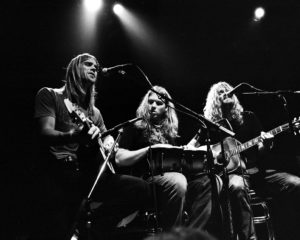
Rose Hill Drive will release their fourth record — their first in six years — on the day of their Fox anniversary show on March 9.
Spending years at the Fox, both on the stage and in the alley, Sproul made friends with the employees. He’s known former cocktail waitress Lisa Siciliano since he was 15.
Siciliano worked at the Fox from September of 1992 to 2001. She’s now a sought-after photographer, shooting regularly at Red Rocks and the Boulder Theater. She never went to school for photography, but her job at the Fox gave her compelling subject matter and an ever-growing pool of connections.
Her job was tough — serving drinks to a room with no sections or tables, carrying as many as 40 drinks at a time, trays lined, the pockets of her apron and pants stuffed, no computers, just a pen and pad — but it wasn’t always thankless. Maceo Parker brought her on stage once so the crowd could cheer for her, and he even encouraged her passion for photography.
“I brought him some little dumb pictures I’d taken of flowers; they were so bad,” Siciliano remembers. “But he was like, ‘You should keep going with that. Follow your dreams.’”
Siciliano’s got as many stories as anyone, from Timothy Leary helping her help clean the dressing rooms (“He was all about it,” she says. “Cleaning clears my brain,” she remembers him saying.), to Ginger Baker being Ginger Baker (“Someone bought him a drink and I brought it to him and he was like, ‘I don’t drink that shit.’”) to meeting Gov’t Mule, Coolio, G. Love and Ben Harper.
She’s got some stories she’d rather not see in print, but she’s damn proud to say that she never took up a single offer to go on a date, save the one she took from her husband, who she met in the café that once operated in the front room of the Fox.
Siciliano’s co-worker Peter “Spot” Sheetz (don’t even worry about the nickname) has rubbed elbows with some rock royalty in his 21 years behind the bar at the Fox. The good-natured Sheetz got to go fishing with Colonel Les Claypool himself. Maceo Parker (everybody’s got a story about the kindness of Maceo) and his band pushed sound check back half an hour just to sit with Sheetz and watch The Simpsons.

But perhaps the best story from the Fox is that of Tony Behrendt, aka Autograph Man. If you ever want to know the date that the band Roshambo changed their name to Free Beer and opened for the Barenaked Ladies, Behrendt can help you with that. He’s collected more than 2,500 autographs, many of those from the Fox. His apartment in South Boulder is floor to ceiling memorabilia, most of it signed: posters, mirrors, guitars, t-shirts, woodcarvings, clocks handmade from old vinyl records.
Cheryl Liguori, a former general manager at the Fox and current CEO of Z2 Entertainment, calls Behrendt their “unofficial archivist.”
Behrendt’s life in Boulder seems both serendipitous and predestined, precipitated by a phone call from a CU student he didn’t know while Behrendt was at boarding school in Boston. He was just 19 when he moved out to Boulder, but he was already an avid autograph collector and rabid music aficionado.
“I didn’t grow up in Boulder, and I didn’t have much to do, and [the people at the Fox] were so cool to me, and I would just introduce myself to everybody,” he says. “I started off with Acoustic Junction, Leftover Salmon, The Winebottles, The Samples, Doug and the Thugs… I just always loved music.”
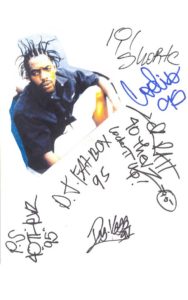
And that’s the way it went. Behrendt has met nearly everyone that has played at the Fox, often getting an entire band’s set of signatures. When he ran a doughnut shop back in 2000, he gave Sia her first doughtnut when Zero7 was in town for a show (he says she ate four). He claims to have played pool with the guys from Naughty By Nature, and he had his autograph requested by Coolio, Bootsy Collins and at least five other people. And everybody you meet at the Fox will back Behrendt up.
And that’s really what’s kept the Fox Theatre going for 25 years: everybody’s got your back.
“I think it’s critical everyone knows that Dave MacKenzie, James Hambleton, Jon [O’Leary], these guys are integral to everything the Fox is today,” Strasburg says. “Each one of them brought so much to the table and deserve more accolades than I do. All the people who work day in and day out: Spot who’s been there for decades, to the kids coming in right now. I can relax and reminisce on my couple of years of 24-hour-a-day work because of all of them.”

